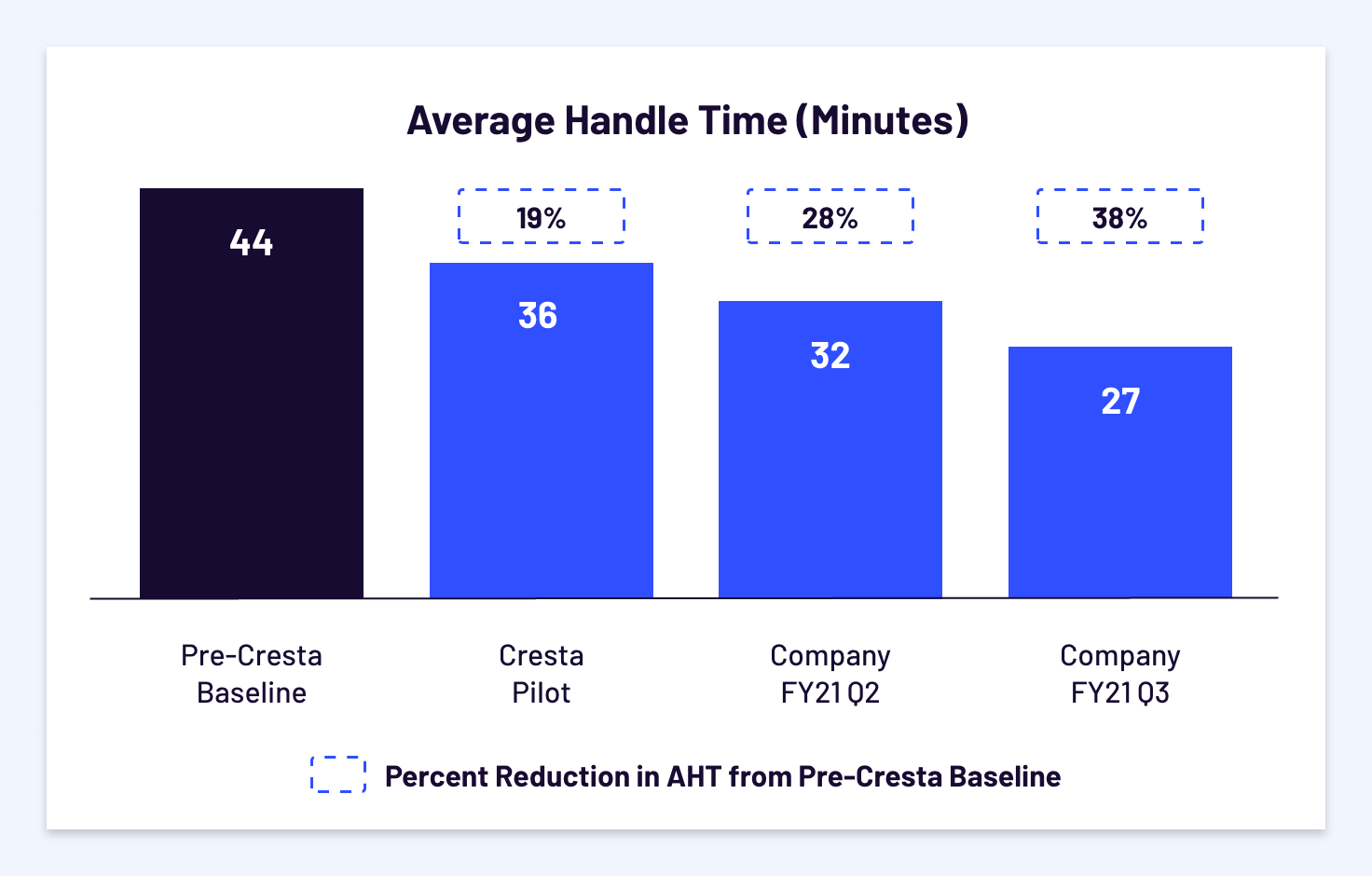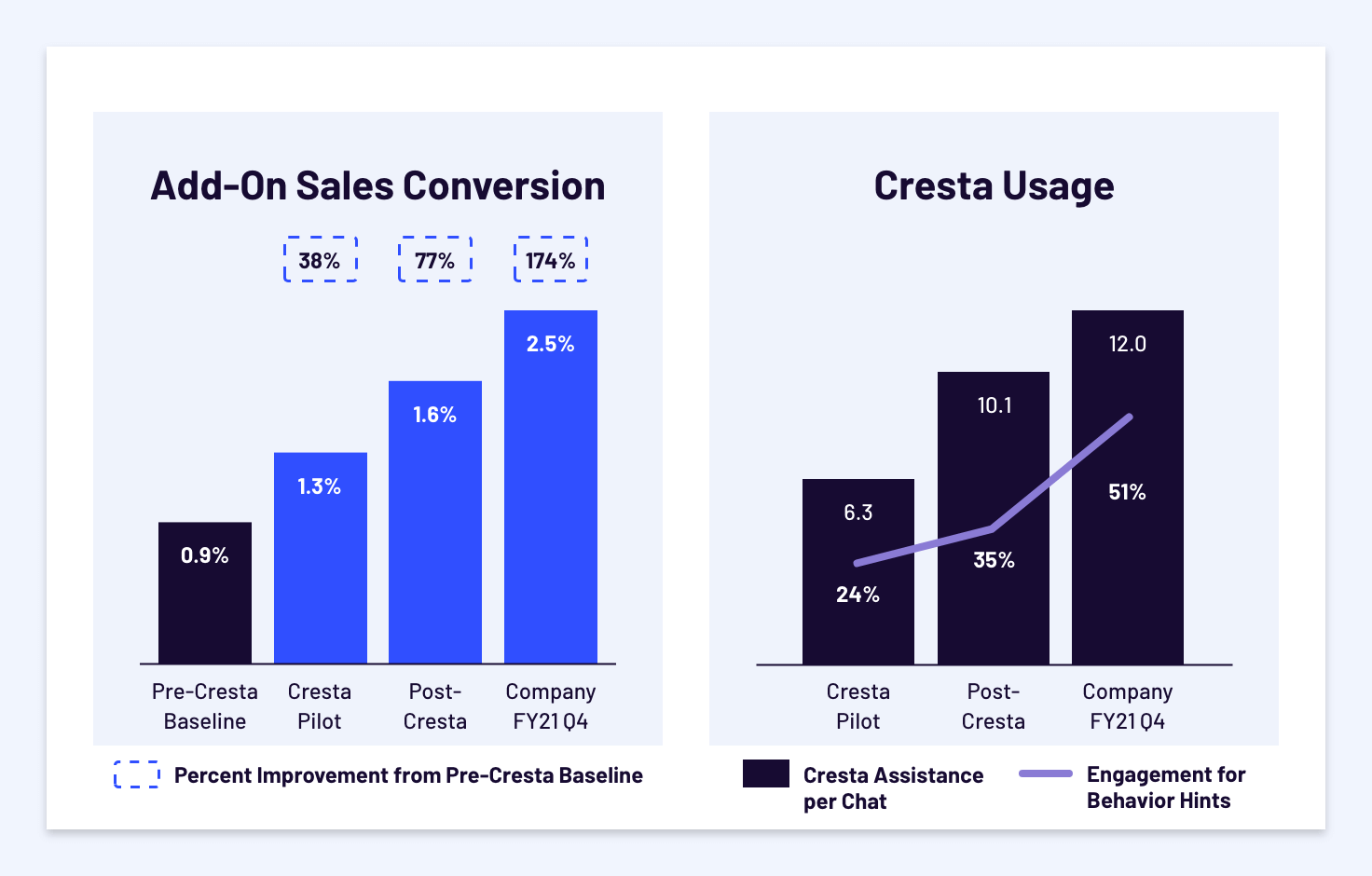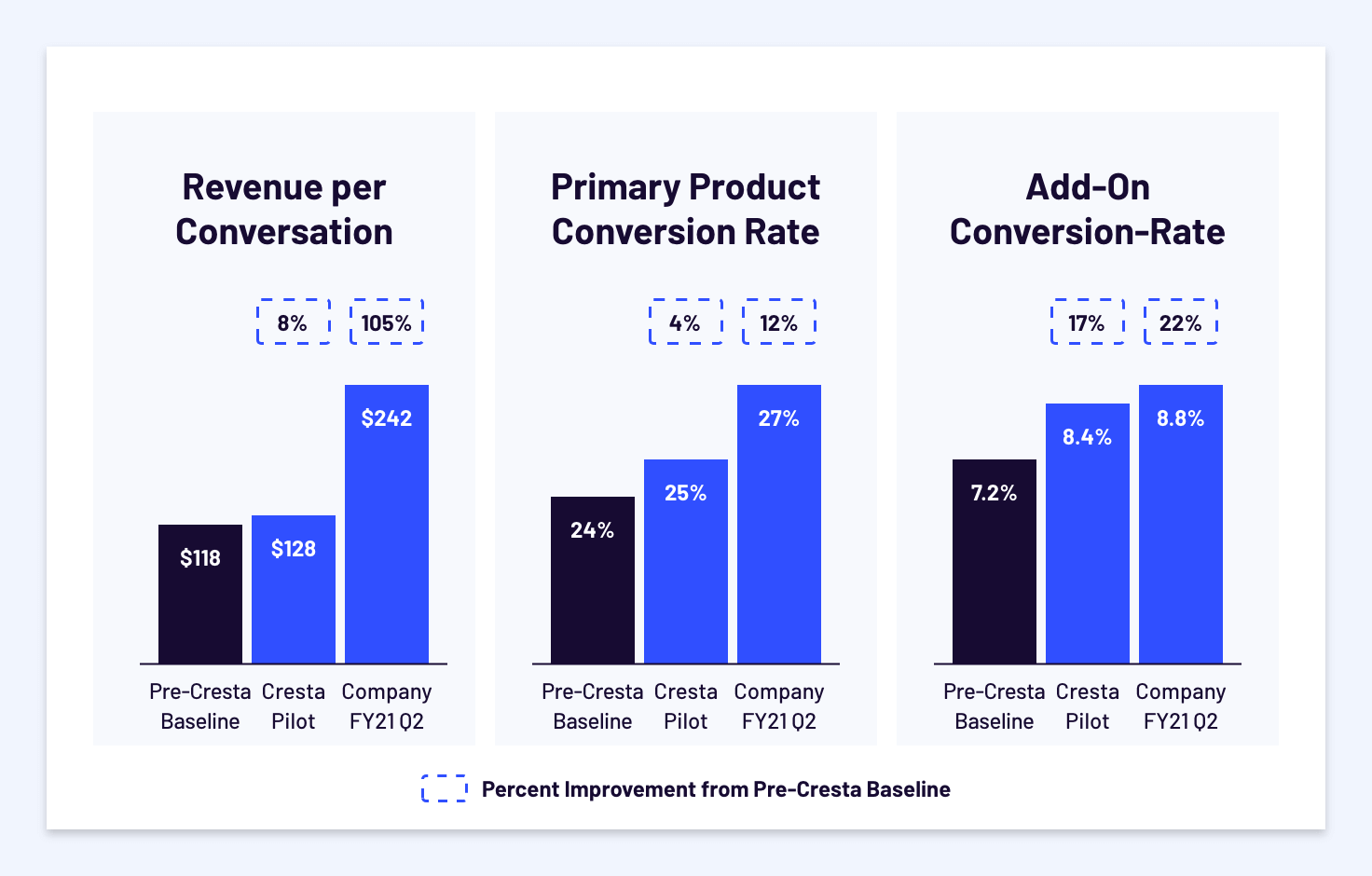
While continuous improvement isn’t a new concept, understanding how to apply it within modern customer experience (CX) certainly is. For leaders working to bring about lasting change, the pandemic continues to exacerbate the challenges inherent to digital CX. Lagging tech infrastructures, misaligned CX understanding, and incomplete or fragmented data sets make it hard to tell where to start with improvement initiatives (whether they’re continuous or not).
This leads to its own problem—CX hyperactivity—where an overabundance of projects and programs are spun up with the hopes that something…maybe…hopefully…will improve contact center performance.
Compare this with CX leaders who chose to employ continuous improvement through the implementation of artificial intelligence (AI). Compared to non-adopters, performance and productivity improved 11.5% when using AI. And, when coupled with a specific focus on improving communication and leading by example, improvement initiatives like these are 3x more likely to succeed.
Fortunately, continuous improvement, communication, and leading by example (e.g., coaching) all benefit from contact center AI.
Continuous Improvement in the Post-COVID Contact Center
Today’s contact centers are rushing to reinvent themselves in the wake of COVID-19, struggling to meet overwhelmed customers where they are and having to do so amidst a historic upheaval in the job market. This makes for a debilitating combination. For instance, in 2020, some contact centers faced a 600% increase in call volume and a 20% decrease in agent call capacity simultaneously. The immediacy and high stakes here seem at odds with the long-view nature of continuous improvement initiatives. But long-term benefits need not come at the expense of immediate impact, especially with regards to tried-and-true performance metrics, such as agent utilization, contacts per agent, and average handle time (AHT).
Virtual customer assistants (VCAs) are an increasingly popular means to improve agent utilization. CX firms utilizing VCAs report up to a 70% reduction in call, chat, and email inquiries when implemented, improving agent utilization and contacts per agent. At the same time, customer satisfaction also increased.
As discussed elsewhere, lower AHT isn’t automatically better AHT in modern CX. But continuous improvement through contact center AI provides the best of both worlds—improved AHT without having to compromise service excellence.
This is exactly what a Fortune 500 software provider proved possible with our platform in 2020. As part of an improvement initiative, their customer care group wanted to improve the efficiency of its care experts. Through our pilot process alone, AHT dropped from 44 minutes on average to 36 (19%). Impressed with this improvement at no cost to service quality, this company continued to improve with Cresta, resulting in a 28% overall drop in AHT in their next quarter to 32 minutes. A quarter later, this total improvement in AHT grew to 38%, resulting in a 27-minute average handle time.
Contact Center AI and a Softer, More-Welcomed Sell
Customers are engaging with contact centers more than ever before. But customers are also expecting more from the agents they contact. Post-COVID, providing service excellence now requires more time, attention, and authenticity. But agents must also do more than simply connect with their customers on an emotional level. They must also identify opportunities to promote offers or opportunities without making a customer feel “sold to.” This is why lasting success in modern contact centers also requires an ongoing focus on agents and their ability to communicate with their customers.
Contact center AI helps by freeing up agents to focus on the customers. In non-AI contact centers, 14% of agent time is wasted tracking down relevant information. Add to that the cognitive complications of multitasking that can also slow agents down by up to 40%. So, helping agents focus on the customer in an increasingly “noisy” environment is imperative. Contact center AI does exactly that.
Historically, we have seen CX AI-focused at handling repetitive, low-value tasks like customer order processing, account reconciliation, and issuing refunds. But the real value of AI is not replacing humans, but working alongside them, providing a substantial benefit to the customer experience. According to Aberdeen, firms that used AI to help their agents focus on high-priority issues outperformed those who did not in several key areas year over year, including agent productivity (7.4% vs. 3.1%), first contact resolution rate (6.3% vs. 2.8%), and number of quality SLAs met (4.5% vs. 1.0%).
Recommendation engines, optimized via machine learning, also boost agent/customer communication, especially with regard to sales opportunities. Contact center AI can monitor contact center conversations, combining a contextual understanding of what a customer needs with their profile and previous actions. Next-best action models then provide agents with recommendations in real-time, whether that’s offering a specific troubleshooting solution or an upsell opportunity.
A leading internet service provider saw this value directly after leveraging contact center AI through Cresta’s platform. Leadership at this ISP needed to transform their customer support center into a revenue-generating value center. With Cresta, they improved their support team’s add-on sales conversion by 38% in the first two months. But as part of an ongoing improvement initiative, this same team increased add-on sales conversions by 2.7x in Q4 compared to pre-AI performance.
Lead by Example with Modern, Impactful Coaching
Adept at the newer technical and analytical demands of modern contact centers, high-performing agents also maintain a customer-centric mindset and excel at communication. These CX polymaths, or “purple people,” as they’re sometimes referred to, are hard to find and even harder to create. To date, traditional coaching methods have failed to close the 30-40% performance gap between top and bottom performance quartiles.
But always-on, personalized behavior coaching is doing what traditional coaching can’t. By modeling top performers, “socially sensitive” contact center AI software provides a more personalized, granulated analysis of agent performance over time. It also allows for coaching to be integrated into the agents’ workflow, before, right after, or even as calls are happening. In fact, 75% of the best managers now coach agents in this way, and research shows integrated coaching alone can improve team performance by 12%.
You can also leverage combinations of technologies as part of continuous improvement initiatives. One global service provider utilizes customer relationship management (CRM) software, call routing, and interactive voice response (IVR) together to provide team leads with “intelligent action boards.” From this initiative, the long-time guidance agents received increased their performance by 15%.
In another example, a Fortune 500 services provider wanted their agents to better capitalize on additional upselling and cross-selling opportunities. To do so, they turned to our contact center AI to improve the quality of their overall CX coaching.
While the results have been lasting, the effect was almost immediate. Agents grew revenue per conversation by 8% during the Cresta pilot. The team went on to more than double those results in their next fiscal period, with the software provider reporting double-digit YoY growth for their SMB segment.
Lasting Success Still Needs a Place to Begin
While it consists of a never-ending series of finite improvements, the true benefits of continuous improvement are from the long-term benefits it provides. Like compound interest, the sooner you begin your investment in CX AI to help with continuous improvement, the sooner it will start to pay off in your contact center.
So, the question shouldn’t be, “Where should we begin?” Consider those in CX already reaping the benefits, asking themselves, “Why didn’t we start so much sooner?”


